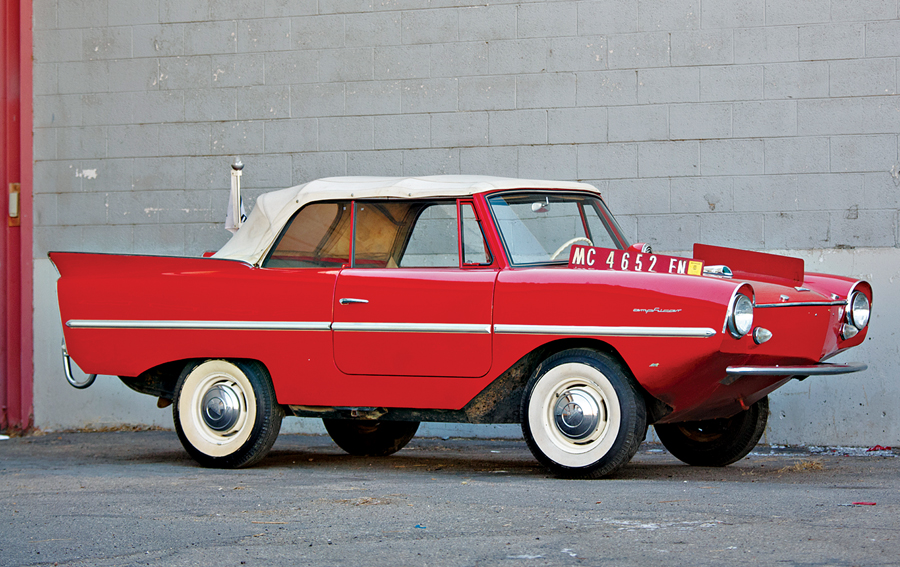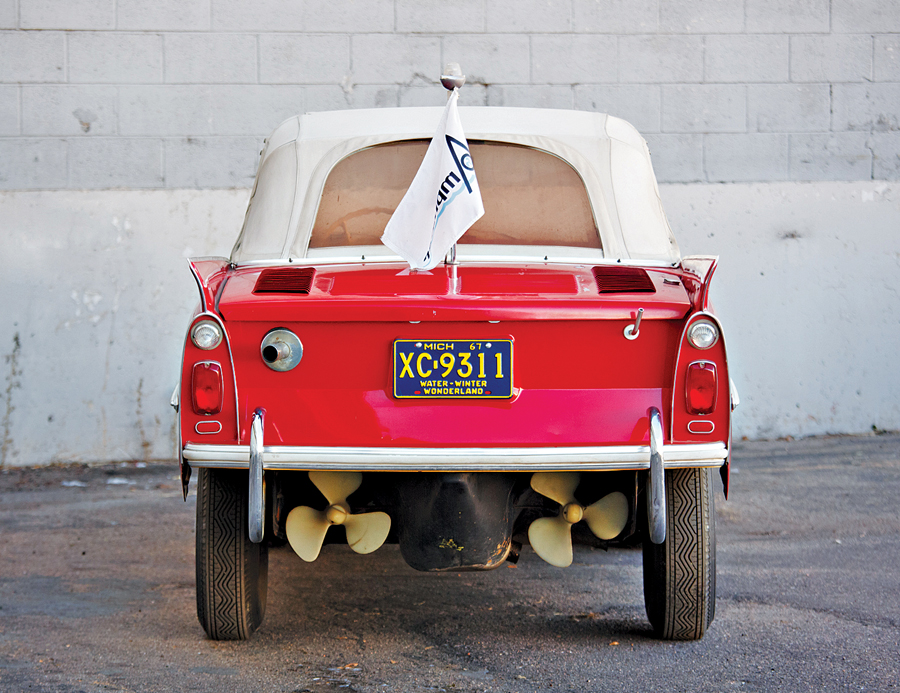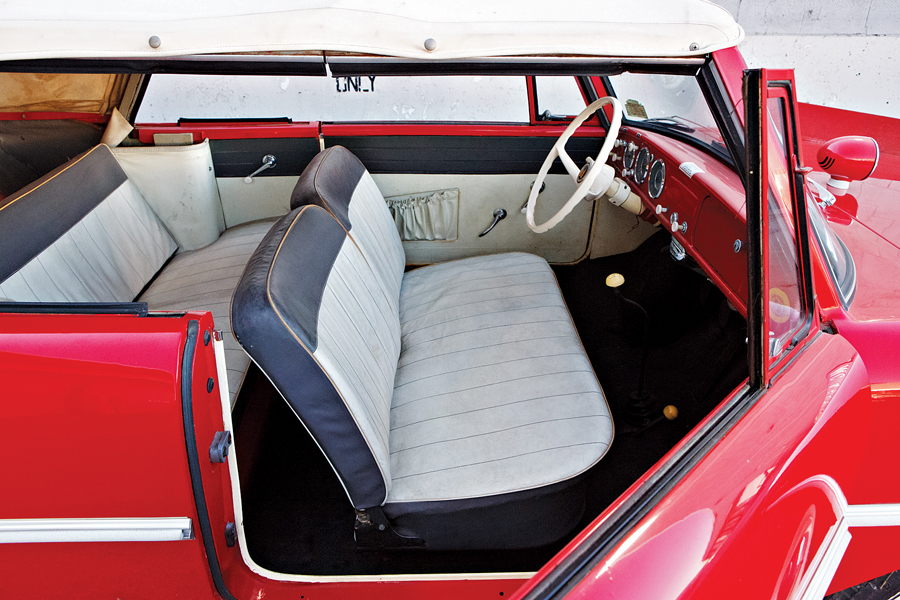
Any car is a rolling exercise in compromise: horsepower vs. economy, stability vs. agility, interior space vs. exterior volume, bilge capacity vs. sinkability.
Whoa. What?
That last is only a problem with the most glaring example of compromise in automotive design ever — the Amphicar 770.
It has been called the “fastest car on the water and the fastest boat on the road” and “a vehicle that promised to revolutionize drowning.” It has also been doing quite well as a collectible — without ever answering the question why.
Gooding & Company just moved a 1963 model 770 for $71,680 at their 2019 Scottsdale Auction, which honestly was a saner investment than all of the shiny, not-quite-correct Chevy trucks hammering at more than $100k at Barrett-Jackson.
But shiny has more drawing power than quirky — at least in the current market.
The Amphicar is definitely quirky. The car is sort of like the RuPaul of motoring — an “Is he or isn’t she” of the automotive world. Despite your impolitic questions, it’s damned entertaining.
An eclectic history
Amphicars were made from 1961 to 1965, but they were so immovable from showrooms they continued to be sold until 1968.
They followed on the design solutions of the World War II Volkswagen Schwimmwagen, a military vehicle that waddled all over Europe with the Wehrmacht.
A total of 3,878 Amphicars rolled off the line — evidently without updating the plans through the production years.
The German Amphicar factory, the Quandt Group, hoped to sell 25,000 units but quickly stopped production as sales failed to materialize.
Cars continued to be put together from parts on hand, and the model year on the title is really the year it was sold — not produced.
Surprisingly, most Amphicars were sold in America, although police and rescue operations from England to Malaysia used the car for those times when just a boat or just a car wouldn’t do.
The Amphicar sold in 1961 for $2,889, or about $24,000 in today’s coin of the realm. The relatively high cost — plus being the automotive answer to a question few potential owners had (can my new car float?) — kept demand down.
The model 770 designation comes from the top speed in the water of 7 knots per hour (that’s 8 miles per hour, but 870 lacks numerical alliteration) and 70 miles per hour, which must be terrifying in either venue.
The engine is a near-bulletproof 1,147-cc mill from the Triumph Standard, which made about 43 horsepower.
The motive power from the stout little Triumph lump either goes through the 4-speed box, or through the props — or both when you want to climb up the boat ramp. There is no rudder, so the front wheels do all the steering work, making it challenging in the water.
But owners rarely spend that much time in the water, since you need to go through a rigorous lubrication process after a boat ride. Owner clubs hold regular “swim-ins,” where they get together to let the Amphicar freak flag fly.
The Amphicar qualifies as a dinghy at just over 14 feet in length, or at the waterline if you are wearing your jaunty captain’s cap, with a beam — er, width — of five feet.
Lots of work — and maybe rust
Are there downsides to owning an Amphicar, in addition to the people pointing and laughing as you drive by, or screaming in horror as you slide off the boat ramp into the water?
Well, maintenance is an issue, with every watery outing demanding a significant grease regime. Rust, from anything in the ’60s, is always an issue, and salt water is never your friend — even in a real boat.
The crucial door seals, which keep your Amphicar from being a large anchor on the bottom, seem to work quite well, and owners say they can leave the car at the dock for hours at a time and still find it afloat.
Trusting souls.
Fun facts
The most famous Amphicar owner was President Lyndon Johnson, who reportedly delighted in taking guests for a ride around the ranch, heading downhill for a pond and then screaming something like, “Ohmigawd the brakes are out and we’re all gonna drown” before splashing in and engaging the twin screws and motor-boating away from shore.
This joke depended on said guests failing to wonder from the get-go why they were getting into a car that sits way too high on land and has propellers, but then that’s why there are congressmen.
The Amphicar, despite appearances, seems to do quite well on the water.
The car that Gooding recently sold was an angry-father barn find, originally driven by a young lady who used it as a daily driver when new until humorless old Dad saw her using the car to wake-surf a container ship on Lake Michigan, took it away and buried it in a warehouse.
Two Amphicar aficionados drove a pair of them across the English Channel, braving and surviving 20-foot waves and high winds. Because Brits.
Both stories should make you feel better about seaworthiness — if not human intelligence.
Values at auction tend to move between $50,000 and $70,000 — depending on the quality of the car and history. There are bargains to be found in a relatively thin market of fans.
The question you have to ask yourself is: Are you ready for this much compromise? ♦


Such a well written, humor-filled article on a truly unique car. I mean boat. I mean…whatever.